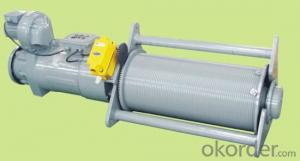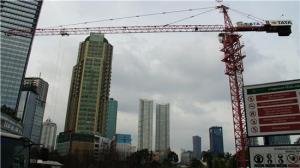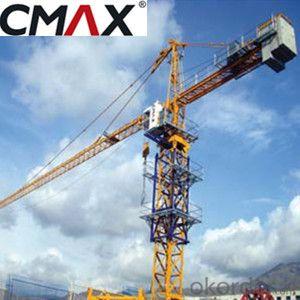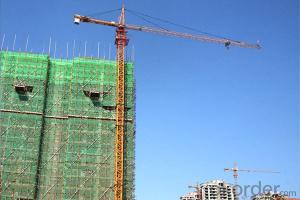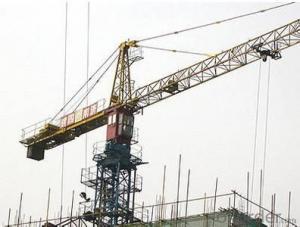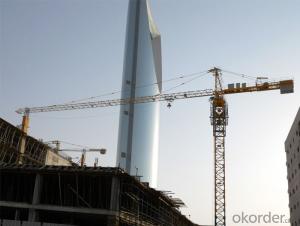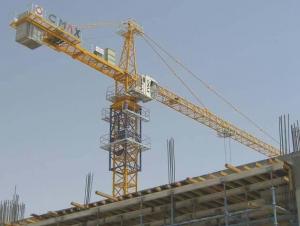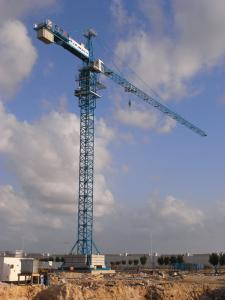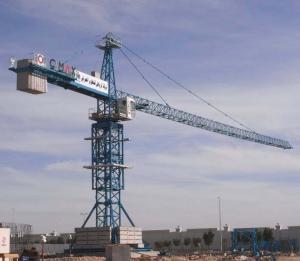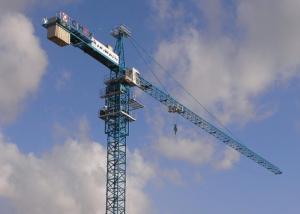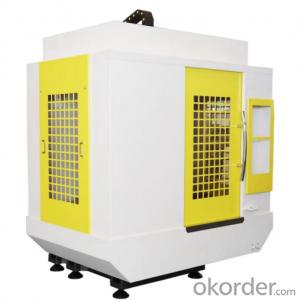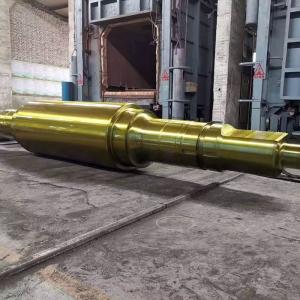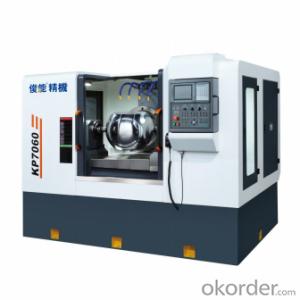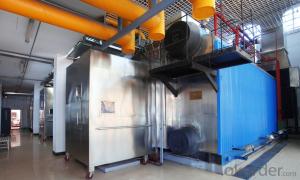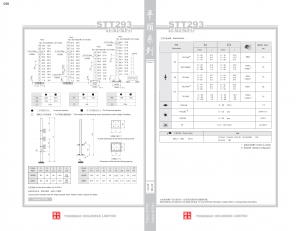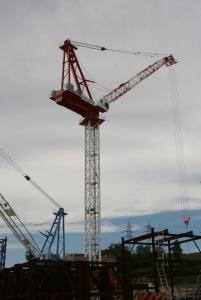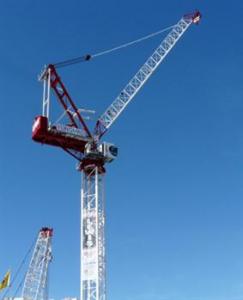trolley mechanism 4D3V2
OKorder Service Pledge
OKorder Financial Service
You Might Also Like
Introduction
According to the France Potain Company’s mature technologies and requirements, the series of the mechanism of the buggy is designed, and it is consitituted with the three-phase asynchronous motor torque, the inner planetery reduction gear, wound roll, rack, and other componets.Through voltage regulation and an eddy current brake role can be low, medium, high rate, the electrical own electromagnetic disc brake, a brake steady speed, brake safe, reliable, accurate positioning, the most suitable for Potain tower crane series and replace imported products.
Performance parameters
Model:4D3V2
Rated stalling torque of torque motor(N.M):75
Rated single rope tension (N):2500
Single-rope linear velocity(m/min):0-58
Rope capacity(m):46
Relevant parameter of the suitable tower crane
--Max lifting load(t):5
--Max crest(m):48


- Q:how do they erect those large tower cranes you see on big building projects?
- A tower crane is usually assembled by a telescopic jib (mobile) crane of greater reach (also see self-erecting crane below) and in the case of tower cranes that have risen while constructing very tall skyscrapers, a smaller crane (or derrick) will often be lifted to the roof of the completed tower to dismantle the tower crane afterwards
- Q:How do tower cranes rise?
- Tower crane, or tower crane, commonly known as tower crane, originated in Europe in the early twentieth Century. It has been used for more than one hundred years, and plays an important role in transportation, logistics, construction and other fields. Since tower cranes look like a tower far away, the way they lift up has become a topic of interest. In fact, according to the functions of the crane can be divided into: foundation, tower, lifting, rotating, lifting, balancing arm, lifting arm, lifting trolley, tower, cab, variable part in building tower crane should first install base part. That is to determine the tower crane erection position, determine the principle to maximize the tower crane construction capacity, convenient tower crane entrance and exit and installation, disassembly. Then choose the right foundation type.
- Q:It seems like every time I turn on the news there is another crane collapse. I don't know if it is the same problem every time, but it seems awfully suspicious. Does anyone know why crane collapses seem so common lately? Has it always been this way?
- You okorder .. This chart is not definitive, it leaves out many occupations (such as mining), it only considers fatalities (not loss of limbs, etc.) but it conveys the general picture. For hard data look at: www.bls /iif/
- Q:ok so i have to us my phone so just give me instructions no links no youtube videos cause my phone cant support them and my phone may not be able to load some of the links
- You are asking for a lot but I have seen you request this a number of times, so I will do it...a sucker born. 1. Valley fold the paper in half so it makes a triangle. With the long side held away from you, valley fold the triangle in half again. 2. Lift the top triangle and valley fold it so that its top point meets its bottom point. Unfold the crease you have just made. Put your fingers inside the top triangle, open it up, and flatten it so it forms a square. Turn the paper over and fold and flatten the remaining triangle in the same way. 3. Make sure that the open ends of the paper are pointing down. Valley fold the top layer of both sides in to meet the centre crease. You will now have a kite shape. 4. Valley fold the top point of the kite down and crease well. Unfold the crease you have just made. 5. Open the sides of the kite by unfolding the flaps you made in Step 3. Lift the top layer of the kite's bottom point up so the paper bends at the crease you made in Step 4. Push the outside edges of the paper in to meet the centre line. Then flatten the figure so that you have a long diamond shape. 6. Turn the figure over and fold a kite shape on the remaining side as in Step 3. Repeat Steps 4 and 5 on this side. You will now have a two-sided long diamond. The bottom half of the diamond is split in two. 7. Valley fold the top layer of both bottom edges in to meet in the middle. Turn the figure over and repeat on the other side. 8. To make the crane's neck and tail, valley fold each half of the bottom section out to the sides. Crease well. 9. Unfold the right crease you just made and make an inside reverse fold. Repeat this step on the left side. 10.To form the head, fold down the end of the neck. Unfold this crease and inside reverse fold the head. 11.Hold one of the crane's wings in each hand. Blow hard into the opening on the underside of the figure and gently separate your hands. You crane will puff up and be ready to hang.
- Q:I know it is the last thing in the movie but what chapter does Crane's death occur? THANK YOU
- It doesn't. It's briefly mentioned in Catching Fire. That's just something the movie added in, a nice touch. Also in the book it is believed that Seneca Crane was hanged.
- Q:I read a book a year ago about sadako sasaki who tried to make all 1000 paper cranes to live. Do you have to keep saying your wish over again when your making them, and when you finished making all 1000 how long did you wait until your wish came true??
- you make your wish once your done cause you only get the wish if you have 1000 cranes right so saying your wish when you only have 6 won't do anything. it can come true the next day till the next year or ten years it not something definite. I've never made 1000 but I think I will.
- Q:i have a 100 ton american crawler crane. how do i calculate the psf, for this equipment.
- Not sure what you are asking exactly... Are you saying that you have a crane with a capacity of 100 tons and you want to know the pressure on the soil where the crane is positioned? In this case, you take the capacity (in pounds) plus the weight of the crane (in pounds) then divide their sum by the area of the tracks on the crane (in square feet). This will result in pounds per square foot or psf as you wrote above. These are example estimates, they may not be anywhere near the correct answer, this is simply how to do the calculation. Assumed Capacity 100 ton = 200,000 lbs. Assumed Weight 105 ton = 210,000 lbs. Assumed Area of Track = 200 square feet Note: 1 U.S. ton = 2,000 pounds = 2,000 lbs. 410,000 lbs / 200 square feet = 2,050 psf There's a start, now you just need to find out how much it actually weighs and how long and wide the tracks are to get the area of the track on the ground. I hope that answers the question you were asking.
- Q:Probably my favorite of the jumping kicks I practice, and I'm curious what experiences you guys have had with it. I've caught people of guard with it after using a crescent or roundhouse kick in kickboxing, and I've done it with a knee to the chest then the kick to the head in Muay Thai. I've also practiced the ten foot kick (using the initial foot up to propel yourself forward instead of up) and crossed the ring to the opponent before they could move. What are your thoughts? What kind of variations do you practice? Ever had any good/bad results from it?
- Every technique has its purpose. If you have favorites, you are limiting yourself by putting more emphasis on one thing over the other.
- Q:I just can't figure this out. They need a crane to assemble tall buildings, but how do they assemble the crane? Especially if the building is over 20 stories high. What crane can build a crane higher than itself?
- a mobile crane sets the original lower sections in place, and then the crane is assembled in 6' sections as it climbs itself.
- Q:Do they have any symbolic-ness about them? any thing like that is good! THank you!
- The oldest living crane is Wolf which was a captive Siberian crane who lived up to be 83. There are 15 species of cranes living today and nine species that died a long time ago. The demoiselle crane are very high fliers flying over the mountains in the Himalayan Mountain range. Cranes are related to the rails coots trumpeters and limpkins. The western whooping cranes population migrates through the great plains to coastal Texas and the eastern whooping crane population migrates from Necedah National wildlife refuge in Wisconsin to Florida.The scientific name of the whooping crane is Grus Americana. Black-crowned crane is near threatened because of the pet trade.
1. Manufacturer Overview |
|
|---|---|
| Location | |
| Year Established | |
| Annual Output Value | |
| Main Markets | |
| Company Certifications | |
2. Manufacturer Certificates |
|
|---|---|
| a) Certification Name | |
| Range | |
| Reference | |
| Validity Period | |
3. Manufacturer Capability |
|
|---|---|
| a)Trade Capacity | |
| Nearest Port | |
| Export Percentage | |
| No.of Employees in Trade Department | |
| Language Spoken: | |
| b)Factory Information | |
| Factory Size: | |
| No. of Production Lines | |
| Contract Manufacturing | |
| Product Price Range | |
Send your message to us
trolley mechanism 4D3V2
OKorder Service Pledge
OKorder Financial Service
Similar products
New products
Hot products
Related keywords
